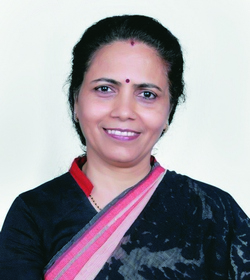Banks and financial services institutions can now take easy lending decisions. Digitization has not only transformed the decision-making process, it has also changed the way risk management is handled in these institutions
Banks and financial services institutions are reevaluating their decision-making processes in the retail loan segment with the advent of digitization and availability of data. Digital transformation in credit risk management as well as in the way information is being made available to take decisions bring greater transparency to risk profiles. These institutions are now able to expand their businesses through targeted risk-based pricing, faster client service without sacrifice in risk levels and more effective management of existing portfolios. They can also effectively meet growing customer expectations using strong data management and advanced analytics.
“The differentiation in products and services offered by banks today are marked by their speed of delivery. For the nextgen customers, today is in fact yesterday,” says Vijay Anandh R, head, Retail Risk at RBL Bank. “Only digitization can accomplish this. To a great extent, Indian banks are not lagging in digitizing various spheres of banking activity,” says he.
He adds: “I will describe the year 2017 as the year of digitization as far as banks and financial institutions are concerned. There are several initiatives and efforts in this regard and all have to a great extent impacted the way banking is done. This is almost akin to the scenario in the early 2000s when ATMs were first introduced in India, which in fact marked the beginning of the new age banking in the country. At that time, only a privileged few could enjoy the benefit of this automation, but subsequently ATMs became one of the preferred channels for banking. Subsequently multiple channels evolved and today we can claim transactions can happen through various channels, depending on the preference of the customers. There has also been a major transformation wherein the role of direct sales agents is just waning as the interactions with customers are made possible through various ways and at different levels.”
SCORECARD MODELS
Govind Sankaranarayanan, COO, Retail Business and Housing Finance, Tata Capital, says in the last 2 years, with the explosion of the digital, more and more financial institutions have recognized the importance of creating digital-focused/digital-first financial products to cater to the instant and varying needs of the digitally-savvy customer. “With customers now spending more time online, be it for banking transactions or online purchasing, the easy availability of non-traditional customer information through their social media profile and other digital footprints has allowed banks and NBFCs to create unique scorecard models to carry out a credit assessment of an individual. We recently launched a product along similar lines called the myLoan app, which uses traditional and non-traditional data sets like a customer’s social profile etc. to assess the credit worthiness of an individual and after giving a #myScore, gives a conditional approval for the loan amount.”
He says the government’s ‘Digital India’ initiative is also lending a helping hand to such financial institutions by opening data through eKYC and other platforms, which will push more financial institutions towards adopting new-age credit assessment methods.
CREDIT RISK MODELING

Vijay Anandh R foresees a scenario where core decisions in banks will be made based on data analytics and credit risk modeling will be the norm
Vijay Anandh foresees a scenario where core decisions are made based on data analytics. “There will also be a lot of emphasis on credit risk modeling, which will enable banks not just to avoid risks but offer credit to more people, who were hitherto remained unattended. Availability of data and tools to process and take out actionable information from this data will also help banks to offer differentiated pricing for their products depending on the customer profiles. I am of the firm view that such a scenario will also help improve the bonding with the customer, which in turn will broaden the scope of customer acquisition. Naturally, this will justify the end use of funds. This is not just for banks but for NBFCs as well, who will have better business opportunities,” he avers.
According to him, digitization can also create a better support system for financial institutions and can respond to customer queries in a more efficient and faster manner because all the information about a customer would be available at one place. This, he says, will change the very role of call centers and the agents at these centers.
“Another major advantage of digitization is the opportunity to cross-sell. For example, if a person has availed of a home loan from a bank or a NBFC, the concerned institution can, based on the credit profiling of the customer, offer him a loan for buying furniture or household goods,” says Vijay Anandh.
RISK-BASED PRICING
Is it feasible for Indian financial services institutions to categorize borrowers and offer risk-based pricing of loans?
Govind Sankaranarayanan feels yes. Says he: “Using risk-based pricing, the borrower with a good credit score can get a lower rate of interest on any kind of loans. Risk-based pricing of loans is a system of offering credit at a rate depending on the customer’s credit score. For instance, lenders may offer a higher rate of interest to you if you are viewed as a higher risk borrower and your credit score is low as per the other banks’ lending policies. For the same loan amount, lenders are likely to offer a lower rate of interest if your score is high. These benefits thus ensure that the customers work towards keeping their scores and credit worthiness high.”
Vijay Anandh is of the view that the system is yet to take off in India. However, banks should adopt this because now information to segment customers on the basis of risks they pose – say prime, sub-prime or Alt A borrowers – is available. “Banks may choose to offer a higher rate of interest if a customer is viewed as a higher risk borrower, depending on the banks’ lending policies. Similarly, borrowers with lesser risk can get lower interest rate. Risk-based pricing helps both the lenders and borrowers. This also leads to ensuring that the customers always attempt to keep their credit history clean and we can prevent delinquencies.”
Harshala Chandorkar, COO, TransUnion CIBIL, points out that credit institutions in India are gradually adopting risk-based pricing of credit products. “Some progressive institutions like Bank of Baroda have started offering credit score-based lending to retail mortgage loan seekers, which involves providing differential rate of interest based on the borrower’s CIBIL score. Customers with a good loan repayment track record and strong financials may get loans which are at least 50-75 basis points cheaper than a customer with a bad credit score,” says she.
She adds that risk based pricing would be advantageous. “For instance, if a lender starts offering comparatively lower interest rate based on this model, it would attract borrowers with good credit scores. This is symbiotically beneficial to both lenders as well as the borrowers. The lender will be able to maintain a good portfolio of borrowers with least probability of default to avoid stressed assets and on the other hand the borrower will be able to make use of the lower interest rate which would further boost the objective of maintaining a good financial behavior in all borrowers.”
Parijat Garg, vice president, CRIF High Mark Credit Information Services, too maintains Indian banks can adopt risk based pricing. “They can segment customers using credit scores and other information captured through applications. Based on the segment characteristics and risk profile of the borrower, the terms of the loan offered could vary. For a segment of customers with low risk could be offered a higher loan-to-value as well as lower interest rate, whereas for customers with higher risk a higher interest rate.”
He points out that Bank of Baroda has already started doing it for home loans and many lenders do it for personal loans. “It is high time when Indian banks begin to incentivize customers with better credit score with better terms, and move away from a portfolio-based pricing of loans. The lenders can maximize profitability by accepting more customers but at the same time, at proportional risk rates,” says he.
KEY ROLE OF BUREAUS
That highlights the role of credit information bureaus. Credit scores were one of the major tools for bankers in their decision making. Has this changed? What do bankers look for in understanding the behavior of a prospective loan seeker?

Govind Sankaranarayanan feels risk-based pricing will ensure that the customers work towards keeping their scores and credit worthiness high
Harshala Chandorkar provides an insight: “You know CIBIL Score has always been an important tool for lenders for assessing the risk profile of the borrowers before taking any lending decision and it still remains so. The CIBIL Score and Report helps the lender assess three vital parameters of your financial health – credit leverage, credit behavior and credit appetite. CIBIL Score and Report showcases to the credit institutions the borrower’s credit exposure like how many loans and credit cards has the consumer availed, what is the type of credit the consumer has availed – secured (home loans, car loans, loan against property) and unsecured (personal loan, credit card) and what is the composition of secured vs. unsecured credit, how much is the total amount of credit taken. The report also reflects the borrower’s credit behavior on how he/she is servicing availed loans and credit cards and his or her credit appetite – how much credit has the consumer already taken and what is the existing debt exposure and whether the consumer can manage additional credit based on his/her income to debt ratio.”
Parijat Garg says the usage of the credit score still plays an important part in credit decisions. “Now, with multiple credit bureaus being available, many lenders use credit scores from two credit bureaus to take a decision. Most large lenders also have their own application scorecards, which take into account information coming in application as well apart from the credit score. This information may include income, monthly expenses, possessions, employment etc. If the loan seeker doesn’t have a footprint in the credit bureau, then the lender needs to depend on alternative data sources for profiling him. In case the customer has an established credit history in credit bureau, such alternative data sources are used to refine the customer’s profile,” he explains.
LENDING DECISIONS
Garg outlines the fundamental principles behind a lending decision – the classic 5 C approach involving assessment of character, capacity, capital, conditions, and collateral, which he says continue to govern the lending decisions. “What has evolved over last few years is how these are assessed, especially the intent, identity and the capacity of the borrower. The data sources for such assessment have come up strong like the data enriched and a robust credit bureau environment than what it was 5 years ago, availability of public registries, infusion of Aadhaar etc. Lenders are increasingly using combinations of data points such as own data (like savings balances of customer), traditional credit data (such as credit bureau data), alternative data sources (such as mobile data, social media data etc), internal credit policies and analytics and scorecard in the lending decision. Such data points are now being used in real-time leveraging variety of technologies to take lending decisions in a few minutes,” says he.
Garg adds that several lenders are also experimenting with the use of consent based data sources (such as Facebook profiles, mobile data captured through bank’s apps, spending pattern on e-commerce platforms etc) for better decision for new to credit or thin file customers.
3 FACTORS
According to Chandorkar, lending decisions at credit institutions for retail credit are largely dependent on 3 factors – income-to-debt ratio, KYC details and the borrowers’ CIBIL Score and Report. These factors have more or less remained constant over the last 5 years, she says.
MONITORING BORROWER

Kalpana Pandey believes assessment of character, capacity, capital, conditions, and collateral will continue to govern the lending decisions
Govind Sankaranarayanan speaks about what could be the ideal methodology in monitoring a borrower: “The ideal methodology that we follow in providing loan to the applicant is to strictly evaluate the capacity to repay the loan amount along with right documents. The eligibility criteria differ according to the type of loan requested. For education loan, the eligibility is checked on the basis of the factors like the student’s past academic record, quality and reputation of the institute where the student wants to pursue the chosen course, history of co-applicants, etc. For auto loans, we provide finance for both new and used cars, therefore the criteria are different in terms of income of the applicant. In case of used car loan, for the borrower, there are few income related eligibility criteria. A salaried individual needs to have a minimum annual income of Rs 3 lakh and should have been in employment for at least two years (of which, one year should be with the current employer). For the self-employed professionals, the minimum income should be at least Rs 2 lakh and the person should be in business for at least 3 years. In our retail loan segment, we also provide business loan and to offer loan digitally, we are associated with Biz2Credit. The eligibility process primarily includes minimum of 25 years of age and maximum 65 years of the applicant, business should be in profit for three consecutive financial years and turnover should be on a positive trend.”
Garg maintains that the methodology of monitoring a borrower differs depending on the nature of loans. “For monitoring, the desired end use is important. Is it for managing risk or cross-sell/up-sell or targets for collections and recovery? The selection of customers, approach of monitoring, frequency of monitoring and analysis of output may also differ accordingly. Watch-list monitoring called Alerts is deployed usually for high-delinquency customers or for very attractive customers susceptible to poaching by competition especially on unsecured products. An offline monitoring works well for prioritizing customers for collections and recovery or for identifying whom to and what to cross-sell or to review existing credit limits or to assess health of entire portfolio,” says he.
He is also of the view that lenders should be looking to use loan origination and/or loan management systems, which are flexible and sophisticated enough to manage a variety of analytical score cards, credit policies and decision flows to support full automation in decision making, at the time of customer onboarding, customer life cycle management and collections. Such systems today are available in SaaS (software-as-a-service) or licensed models, he adds.
“Mid-to-large and diversified lenders should also evaluate deploying an effective de-duplication system to be able to identify customer uniquely across the product portfolios,” he says.
Garg mentions that social media behavior and its relationship with credit risk is yet to be seen in India. “The usage of social media for a regular Indian customer is very different from the western world. Is posting pics etc. or following a thread good enough to assess a credit risk? However, it can be used for verification and checking consistency of information provided by the applicant to some extent,” says he.
INFORMATION LINKAGES
Vijay Anandh says there is whole lot of information linkages like Aadhaar being made mandatory for income tax returns filing or PAN being made compulsory in house purchases, or KYC necessary for opening a bank account. This is going to create a huge information pool and this information pool is now available to financial institutions, which can process this data at granular levels and take decisions based on this data. This linkage in all the identification documents, he says, will benefit the customer by eliminating the risk of fraud and better pricing on financial products. “Digitization is also going to create a level playing field for banks in the country, because the data assets would be available to all and they would all be making use of the same tools to process this data to base their decisions. As this situation increases competition, it will be the customer who will be the final beneficiary,” he says.
But, this work is already being undertaken by credit information bureaus and banks and financial services institutions have access to the processed data on customers from these bureaus. Besides, there is whole lot of processes involved in deduplication of the data, which the bureaus are in any way doing. So, it is a duplication of work?
ONE VARIABLE
Vinay Anandh agrees that credit information bureaus are undertaking the task of processing data on customers and banks depend on their products for decision-making. “But, these products are just one variable, which add to the information financial institutions create on their own about customers. To that extent, we at banks improve our decision-making. The advantage we will have by undertaking data mining and analytics is that we will have the capability to understand the difference between a low risk customer and high-risk customer. It will not just be determined by a score provided by the bureaus. As regards deduplication, there are elementary processes like data scrubbing which can take care of this. Of course, the work can also be outsourced. The whole process of mining and analysis can now be completed in just 10 steps,” says he.
Chandorkar says the RBI had mandated all credit bureaus to provide credit score in the range of 300- 900 where a score with propensity to 300 would imply high riskiness of the borrower whereas, a score closer to 900 would mean low riskiness of the borrower. Today, all bureaus in India provide credit scores on this range. However, each bureau has its own proprietary algorithm of score calculation.
“Availability of credit information insights and solutions from TransUnion CIBIL has significantly contributed to driving growth in the retail credit segment while fueling credit penetration and financial inclusion,” she says, adding “TransUnion CIBIL Data Analysis reveals that retail loans have grown at an average CAGR of 28% over the last 3 years while at the same time there is significant reduction in retail NPA rates. Credit information solutions have also helped reduce the average time required for approval of a loan application from approximately 7-9 days 3 years back to around 3-4 days today. Usage of information solutions have contributed to the growth in rural lending – enquiries on the bureau for rural lending was around 25% over 5 years back and has steadily grown to almost 35% today. We would be evolving and customizing our solutions to the market dynamics for ably supporting the industry on credit penetration and financial inclusion.”
NEW PRODUCT

Harshala Chandorkar points out that CIBIL Score and Report helps the lender assess 3 vital parameters of a borrower’s financial health
Chandorkar also says credit bureaus are today offering products, which are beyond the traditional credit score, and which offer clear insight into a customer’s behavior over a period of time – say 5 years. “For example, we have recently launched CreditVision to expand the eligible consumer base and drive access to finance for many more deserving consumers. CreditVision is a transformational way of looking at the past credit behavior of a consumer. CreditVision algorithms predict risk and expand credit opportunities by intensively studying the trended data that unlocks the patterns in payment, exposure and spend behavior. These algorithms, which are based on the past 36 months of trended data, enable identification of comprehensive and specific customer behavior and are delivered in an easily usable and quantitative format to enable financial institutions to use these customer insights for making more precise lending decisions. This would pave the way for possibilities to expand the retail credit market and promote access to cheaper, easier and faster credit opportunities, which is a major aspect of financial inclusion in this digital age.”
She mentions that TransUnion CIBIL’s analysis of consumer credit demand and behavior using CreditVision, shows that it could enable credit access to an incremental 15 lakh borrowers every year without compromising on risk. In addition, the algorithms have identified another 20 lakh borrowers who currently have access to banking credit, but would be eligible for higher lines of credit or higher loan-to-value.
INSTANT LOANS
Several banks offer loans almost instantaneously and through online platforms? How risky is this? What are the inputs that should normally go into while taking such decisions?
Vijay Anandh responds: “Banks and financial institutions today have technology platforms that can eliminate risk and creating customer profile almost instantaneously. There are systems like eKYC, which ensure that the relevant information is available. Banks are also having in their possession the information on the credit behavior of the applicant. And these are available to the decision maker, who can in almost all cases take instant decisions. There are basic advantages like improved customer experience, better bonding, little documentation, and elimination of middlemen or agents. What all these leads to is the fact that data analytics is going to become the core in decision-making in banks.”
Garg says extensive use of data and derived analytics through robust and flexible technology platforms have made this possible. “These are not necessarily risky as the heuristics of manual underwriting have been codified in addition to other sophisticated statistical approaches. The online platforms and real-time assessment tools have enabled a quick access to customer from anywhere and at any time, and availability of decision in a few seconds to a few minutes. A customer is exposed to so many things every day because of hand-held devices enabled with internet connections. The loyalties are short and attention span shorter. Quick decisions and online seamless service, therefore, has become focus area for financial institutions too,” he says.
Govind Sankaranarayanan’s views differ slightly. Says he: “Most banks offer instantaneous loans (including disbursals) only to their own customers ie, those customers who have an existing back account with them and consequently, have conformed to all KYC norms by sharing all their information with the financial institution. Traditionally, most NBFCs and other financial services companies only offer instant loan approvals, which is fulfilled only once the customer shares additional documents with them. While the former isn’t risky as the bank has full disclosure on the customer via their bank account details, the latter has its risks associated with fraudulent bank account statements and other documents, which could give the lender a wrong impression about a customer. But with the advent of stringent KYC norms involving the use of PAN and Aadhaar has helped mitigate such risks and offer a clear picture.”







